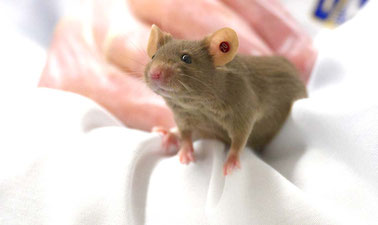- Level Foundation
- Duration 16 hours
- Course by University of Alaska Fairbanks
- Total students 2,535 enrolled
-
Offered by

About
The study of neuroscience aims to understand the human brain, cognition, the nervous system, and much more. There are many branches of neuroscience, including medical neuroscience, computational neuroscience, and behavioral neuroscience. Studying the human brain can be difficult, so scientists often first use mice in research because of the similarities in neuroanatomy, neurophysiology, and neurobiology. By studying the brains of mice, we gain insight into how the human brain works. This behavioral neuroscience course on edx covers the fundamentals of research involving mice, mice behavior and how it can be used to understand human behavior, and more. Enroll now to:
-
Understand how to handle laboratory mice responsibly according to federal law by completing animals care and use training.
-
Understand how research on animals must be scientifically justified, humane and ethical, use appropriate research methods, and provide new knowledge.
-
Collect behavioral data from mouse videos from compulsive-like, non-compulsive-like, and randomly bred mouse strains; a mouse model of obsessive-compulsive disorder (OCD).
-
Obtain competency in using behavioral tests to measure repetitive behaviors in laboratory mice analogous to compulsions in humans.
-
Establish a foundation in using behavioral tests in laboratory mice to be able to confidently learn how to use new tests.
-
Develop an ability to analyze behavioral neuroscience data using mice and understand repetitive (compulsive-like) behaviors in animal models.
-
Develop an ability to interpret and discuss results in the context of human behavior, and especially psychiatric disorders, and the mouse model of OCD.
-
Obtain a competency in describing key characteristics of OCD in humans and human behavior as described in the diagnostic and statistical manual of mental disorders (DSM), including obsessive and intrusive thoughts, repetitive behaviors, and hoarding disorder.
-
Develop a capability to formulate original research hypotheses as used in the fields of behavioral sciences, neuropsychology, and behavioral neuroscience.
-
Obtain a competency in describing and discussing how basic research contributes to the animal model of OCD and how it may have the potential to improve human mental health conditions, quality of life and the biological basis of human behavior.
Learners who join this course should be free of objections to using mice in research.
What you will learn
-
Learn responsible conduct of research.
-
Collect, analyze, and interpret behavioral data from mouse videos.
-
Establish a foundation in using behavioral tests in laboratory mice.
-
Understand obsessive-compulsive disorder in humans and compulsions in animals.
-
Understand the role of animal models in studying human psychiatry.
Skills you learn
Syllabus
-
Module 1: Introduction, Animal Care and Use Training
-
Module 2: Ethics of Animal Research
-
Module 3: OCD in humans and compulsive like behavior in mice (nesting)
-
Module 4: Compulsive-like behavior: Data collection and analysis of marble burying behavior
-
Module 5: Interpretation of results
Auto Summary
**Course Overview: Behavioral Neuroscience: Foundations of Compulsive Behaviors** Embark on a fascinating journey into the realm of behavioral neuroscience with this comprehensive course designed to explore the intricate workings of the human brain through the study of mice models. This foundational course delves into the essential aspects of research involving laboratory mice, providing insights into their behavior and its implications for understanding human compulsive behaviors, particularly in the context of psychiatric disorders like obsessive-compulsive disorder (OCD). **Key Attributes:** - **Focus:** Gain a thorough understanding of handling laboratory mice responsibly, adhering to ethical and legal standards, and scientifically justifying animal research. - **Domain:** Science & Engineering, with a specialized focus on behavioral neuroscience. - **Instructor:** Offered by edX, this course brings expert knowledge and structured learning to your fingertips. - **Content Highlights:** - Mastering animal care and use training - Scientifically justified and humane research methods - Collecting and analyzing behavioral data from mouse models of OCD - Learning behavioral tests to measure repetitive behaviors in mice - Interpreting results in the context of human psychiatric disorders - Formulating original research hypotheses in behavioral sciences - Understanding the diagnostic and statistical manual of mental disorders (DSM) criteria for OCD and related behaviors - **Duration:** A comprehensive 16-week program designed to fit into a professional schedule. - **Subscription Options:** Available under the Professional subscription plan, providing access to high-quality educational resources and certification. - **Target Audience:** This course is ideal for learners with a keen interest in neuroscience, behavioral sciences, neuropsychology, and those who are open to using mice models in research. It is particularly suited for professionals looking to build a strong foundation in behavioral neuroscience and contribute to advancements in mental health research. Join now to enhance your expertise in behavioral neuroscience and contribute to the understanding and potential improvement of human mental health conditions through rigorous and ethical research practices.

Abel Bult-Ito


